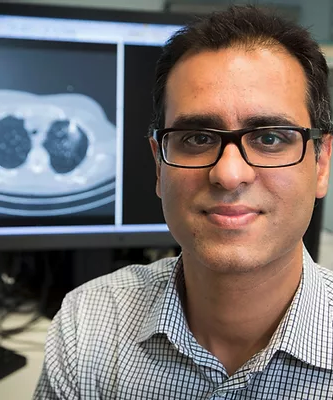The radiologist who said that radiographers were ‘the real heroes’ of the pandemic has been appointed National Specialty Adviser for Imaging by NHS England.
Dr Sam Hare joins the team of part-time advisers who provide national clinical leadership, advice, input and support across distinct areas of NHS conditions and services.
Dr Hare is a consultant cardiothoracic radiologist at the Royal Free London NHS Foundation Trust. As an executive committee member of the British Society of Thoracic Imaging, he was central to implementing national Covid-19 imaging protocols and co-authoring national reporting guidelines for lung cancer screening.
He also represents the Royal College of Radiologists on the British Lung Foundation Taskforce for Lung Health and is passionate about service transformation and the use of artificial intelligence in optimising diagnostic imaging workflows.
Dr Hare originally studied medicine at Fitzwilliam College, University of Cambridge, and in May this year told the college website: ‘The radiographers are the real heroes in this pandemic – every person who comes to hospital has to have an X-ray and the radiographers then pass them to radiologists like me via a digital system. They’ve been doing portable x-rays, which means a report is available within minutes. It has been a really important element of treatment and has made a massive difference.’
After undertaking a thoracic radiology fellowship in North America (2009-10), he was appointed as consultant thoracic radiologist at The Ottawa Hospital in Canada, specialising in lung cancer screening and early diagnosis. He returned to the NHS in 2011 and pioneered the innovative ambulatory lung biopsy service at the Royal Free.
SoR Director of Professional Policy Charlotte Beardmore welcomed the appointment: ‘We look forward to working with Dr Hare in supporting the development of imaging services, and showcasing how the diagnostic radiography profession can help support service transformation for patients with appropriate investment together with other stakeholder organisations’.
